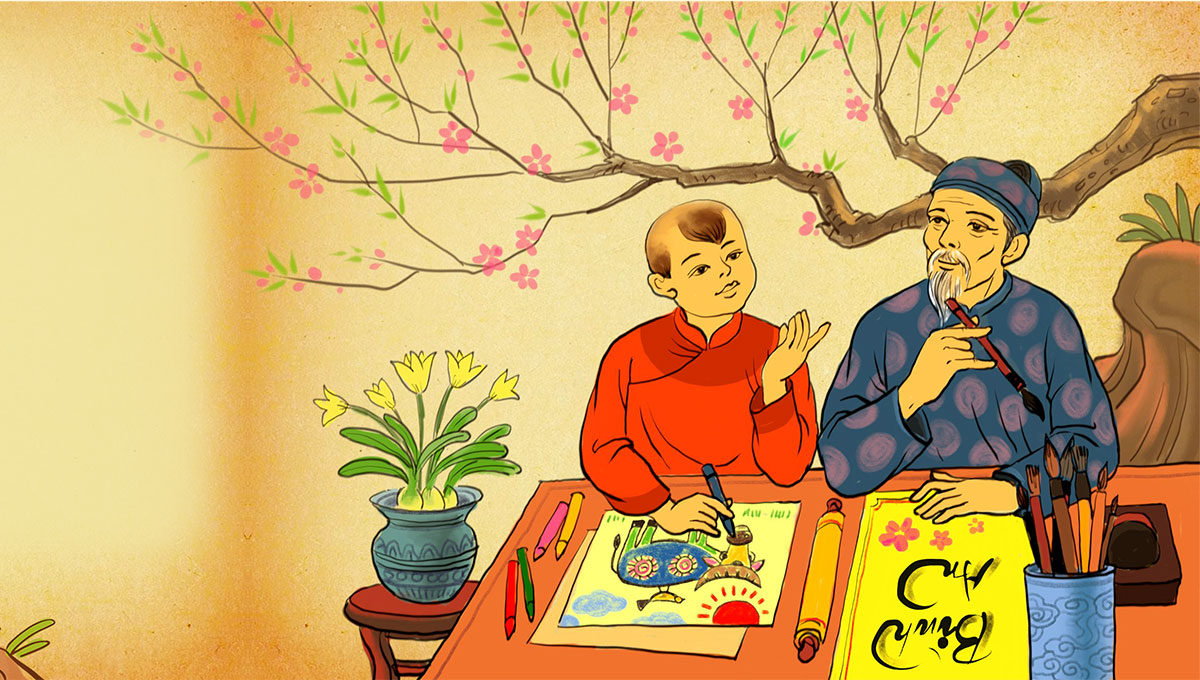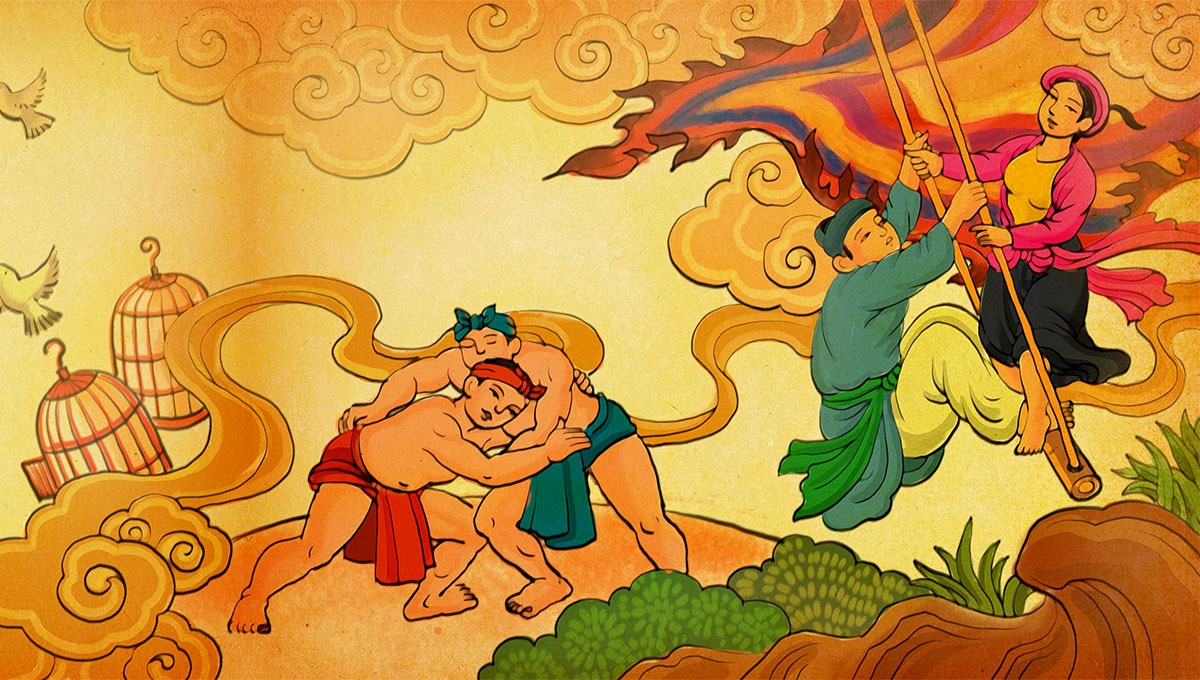Worship during the New Year festival
On the 23rd day of the twelfth lunar month, after the ritual of cleaning incense burner and ancestral altar (lễ bao sái), every family will hold the ceremony to see off the Gods of Kitchen to the Heaven. They prepare a tray of five fruits (mâm ngũ quả), jams, candies and cakes and place all of these offerings on the ancestral altar. In the afternoon of the 30th day of the twelfth lunar month, there is the year-end worshipping ceremony (lễ cúng tất niên) to inform ancestors that the old year is over. At night of the same day, each and every family performs the New Year’s Eve ceremony (lễ trừ tịch) in order to say goodbye to the Tutelary God of the Old Year and welcome the God of the New Year. In the first morning of the New Year, another worshipping ritual is carried (cúng nguyên đán). In the afternoon of the first day and on the second day, every household holds the morning and afternoon worshipping ceremonies (lễ chiêu điện and tịch điện). On the third day, most of families usually perform a kind of thanksgiving ceremony in which votive paper is burnt (lễ cúng tạ hóa vàng). The practice of worship during the Lunar New Year festival demonstrates Vietnamese people’s gratitude to their ancestors.






